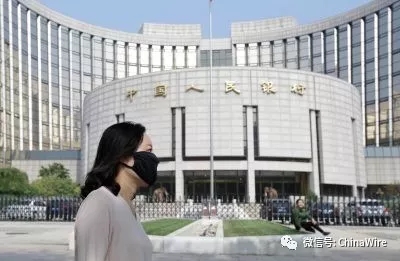|
Putting The Brakes On China’s Slowdown
China’s economic performance in 2018 was rather disappointing. According to official statistics, the country’s growth rate during the year was 6.6 per cent, the lowest since 1991. The real situation was probably even worse. Two engines have driven the Chinese economy for decades: fixed asset investment and exports. Both lost steam in 2018. In the first three quarters of 2018, fixed investment grew by just 5.4 per cent year on year (compared to 7.5 per cent in 2017). This was largely because growth in infrastructure investment, which accounted for some 27 per cent of fixed investment, plummeted from 19.8 per cent in 2017 to just 3.3 per cent in 2018. Although a slowdown was inevitable after four decades of breakneck growth, the Chinese government should try to stop further deceleration. Otherwise China’s economic, financial and social stability may be jeopardised by a hard landing. This can be achieved if the government adjusts its macroeconomic policy stance. What matters is not only whether expansionary or contractionary macroeconomic policy has been used, but how it is used. Many worry that use of expansionary macroeconomic policy could hamper structural reform and long-term growth. This is not inevitable. In fact, a worsening of the economic situation due to macroeconomic tightening may make structural reform more difficult. If expansionary macroeconomic policy leads to a wasteful use of resources, it will lower China’s total factor productivity (TFP). However, it will improve TFP if used wisely by, for example, increasing the utilisation rate of capital. Begin with monetary policy. The People’s Bank of China (PBOC) is currently responsible for — at a minimum — maintaining the stability of economic growth, employment, prices and the exchange rate. That is too many objectives to pursue simultaneously without compromise, as reflected in sudden and frequent monetary policy reversals. The PBOC has changed its policy stance four times since late 2011, partly in response to fluctuations in housing prices. But its manoeuvres often undermine its other objectives. While tightening monetary policy can rein in runaway housing prices, it exacerbates the growth slowdown. Monetary tightening might not even be called for. Though many argue that the PBOC’s past liquidity injections — especially its stimulus in response to the 2008 global financial crisis — caused the real-estate bubble, housing prices began to skyrocket long before. It is not clear that increasing the money supply boosts prices. It may even work the other way around: because rising housing prices have absorbed too much liquidity, the PBOC has to increase the money supply to support the real economy. With China’s growth steadily declining and the consumer price index at around 2 per cent, the PBOC would do well to adopt a more expansionary monetary policy. Fiscal levers can be used to contain increasing housing prices, which, given popular frustration, remains an important objective. Expansionary monetary policy would put downward pressure on the renminbi, compounding the effects of the US Federal Reserve’s ongoing normalisation of interest rates. On the other hand, it is difficult to predict what will happen in the US economy with a precarious president at the helm. In 2019 there could be either appreciation or devaluation of the renminbi. The PBOC should allow the exchange rate to be decided by market forces so as to preserve its monetary independence and avoid wasting more foreign exchange reserves. For too long, China’s obsession with currency stability has deprived the PBOC of true monetary autonomy. It is time to move on. Chinese enterprises should have learned by this point how to protect themselves from exchange rate fluctuations. And China maintains capital controls that effectively protect it against an excessively sharp devaluation, let alone a run on the renminbi. In any event, the more important challenge for China’s leaders is to devise a new approach to fiscal policy. Even US President Donald Trump’s administration, with its limited understanding of economics, recognises government’s vital role in strengthening areas in which the private sector has insufficient incentive to invest but that are important to national security and economic stability. At the end of 2017, China’s official public debt-to-GDP ratio stood at 36.2 per cent. The real figure is probably significantly higher if one accounts for contingent liabilities, especially the debts owned by local government financing vehicles. But even then, China’s fiscal position is rather strong compared to most countries, especially bearing in mind that not all local government debts are bad debts. This means that China still has room to pursue expansionary fiscal policy, with a focus on reversing the investment slowdown that fuelled the decline in GDP growth in 2018. Certainly, reasonably low debt-to-GDP doesn’t mean large-scale fiscal stimulus is necessarily a good idea. But faced with the steady downwards sliding of the economy and the resulting pessimism that in turn will lead to a further downwards sliding of the economy because of a weakened desire to invest, are there better options for the Chinese government? The concern that inefficient investments are fuelling debt accumulation can be addressed effectively with better-designed projects and appropriate limitations on the role of local governments. In particular, rather than permit local governments to borrow from commercial banks to fund infrastructure investments, the central government should foot a larger portion of the bill. Local governments should issue local government debts rather than borrow from banks to finance local infrastructure projects. Higher expenditures and lower revenues resulting from tax cuts and fee reductions may cause China’s budget deficit-to-GDP ratio to exceed 3 per cent. But like the 7 RMB threshold for the US dollar exchange rate, that threshold should not be considered sacred. As long as interest rates for government bonds can be kept low, the government should not be afraid to issue more of them. Expansionary macroeconomic policy alone will not resolve all of China’s problems. And it undoubtedly carries significant risks. But given the paramount importance of stabilising growth, the Chinese authorities need to use all of the tools at their disposal. |


